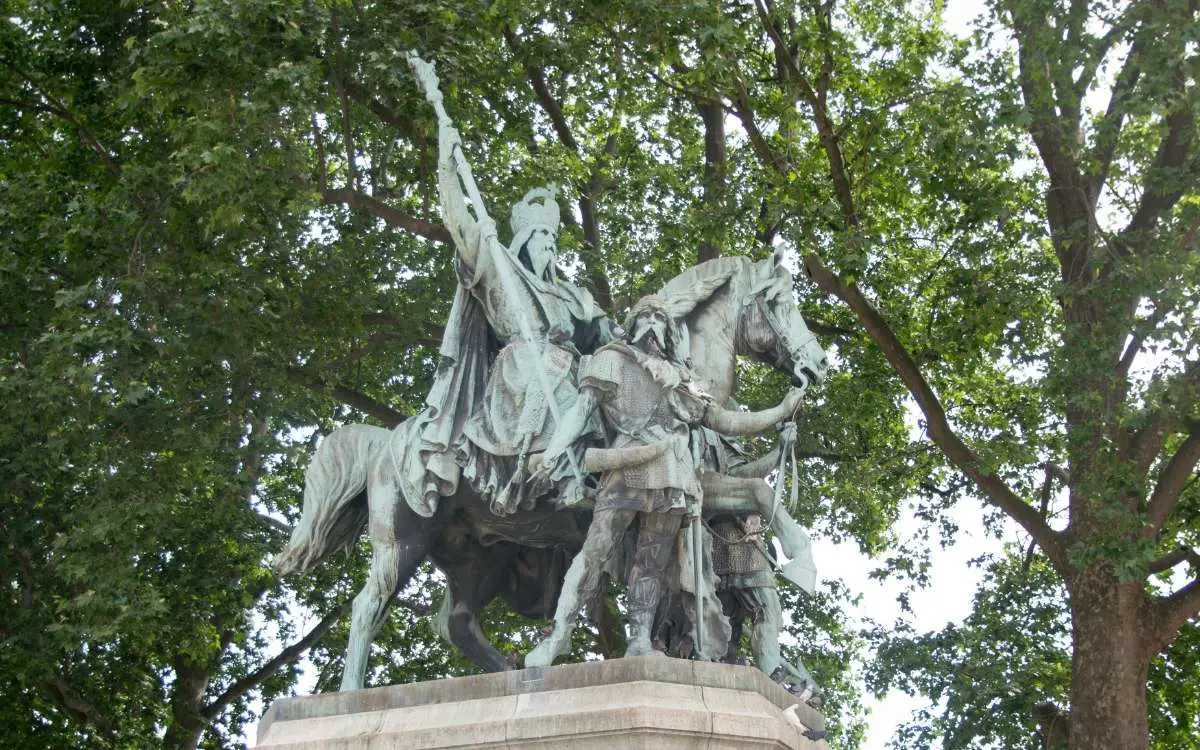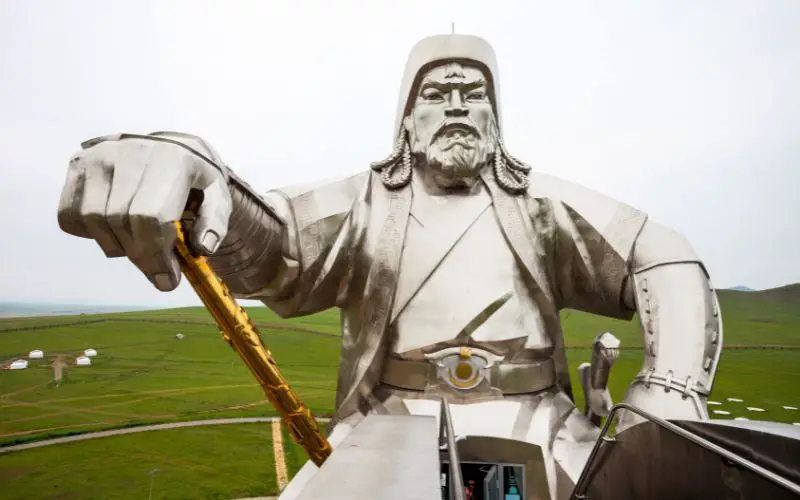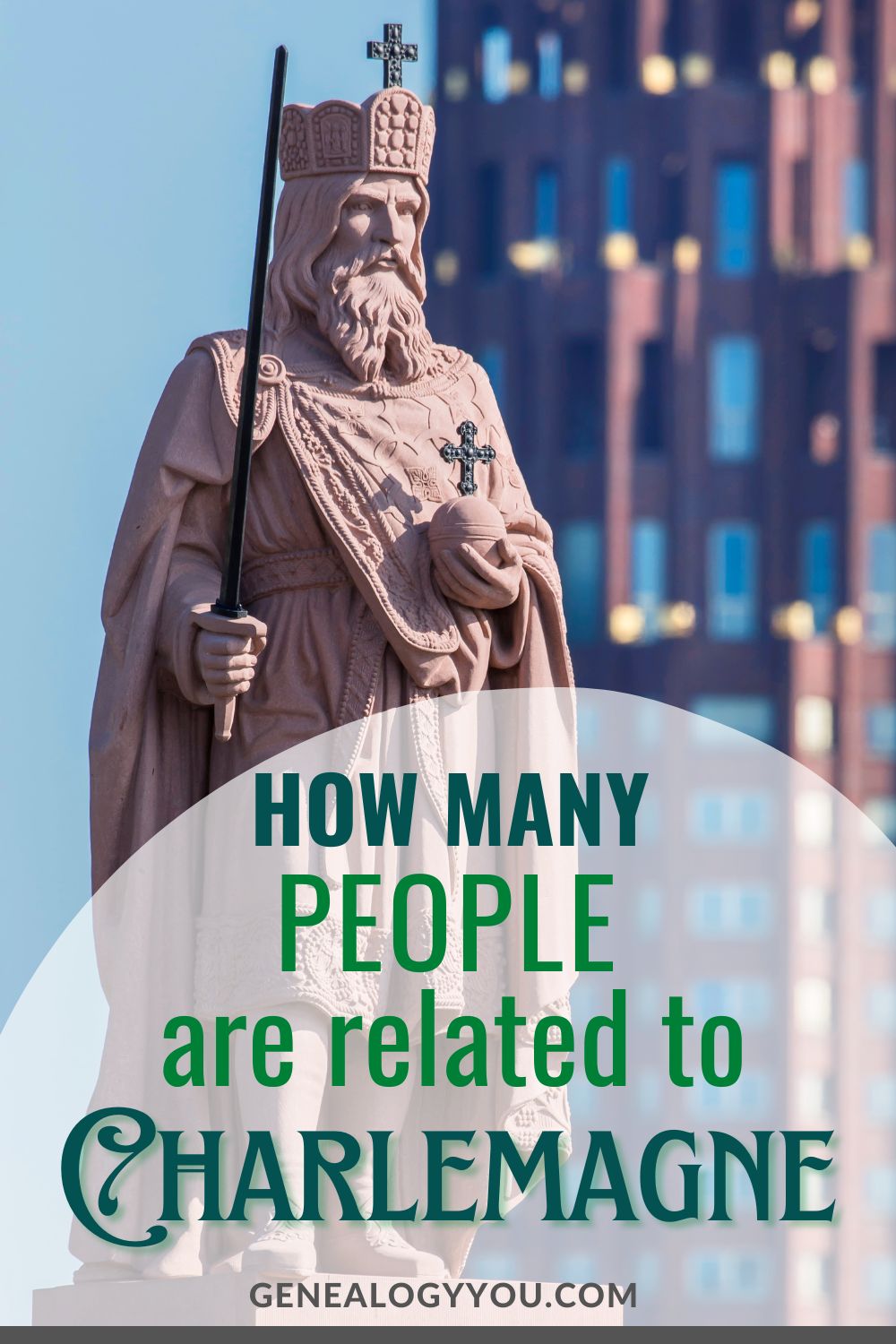One fun thing about sharing with friends or family, or even strangers, that you’re interested in genealogy is the story. You always find at least one person with a story of how they are direct descendants of royalty or a famous person from history.
The generations get confused as they explain, but you listen politely.
To be fair, there’s something ingrained in humanity about being connected to someone who meant something, someone who did something great even. Perhaps it’s a projection of what we’d like to accomplish ourselves.

No one wants to claim ancestors who were embarrassing or did horrific things. Even the family of Hitler decided not to procreate, so his line wouldn’t carry on.
But what is it that living descendants want people alive now to know? If your ancestors were nobility, what does that say about you now?
It’s interesting to share, but it does not reflect the life being lived today. What’s more, what will your descendants say about you a few hundred years from now?
Perhaps now you’ve got time to think about how you could impress them as your great grandparents impressed you.
Being a Direct Descendent
Along with people coming up with stories, every once in a while you’ll hear someone drop bigger names. One popular name is Charlemagne.
While it’s possible that someone would make that up for clout, the truth is it’s not as crazy of a reach as you might think.
It’s likely that there are a billion people alive today who would qualify as Charlemagne’s descendants. This estimation comes from 40 generations or so back when Charlemagne lived.
That’s quite a lot of time, 1,200 years, to keep a family tree lined up properly, right? How many direct descendants could a person really have? Also, how is it possible to be the father of Europe?
Holy Roman Emperor Charlemagne Was Busy

Charlemagne was born in 747 and was about 21 when he married for the first time. In total, he’d have about 10 women to help expand his family line over the course of almost 20 children.
They took the form of both legitimate and illegitimate offspring.
His second wife alone bore him nine children. Unfortunately, there was too much pressure on her very young body and she passed away in her late 20s.
Despite having many offspring, he only ended up with four grandsons.
How Can That Many Still Be Descended From Charlemagne?
If your family trees are screaming at you to find out if you share this common ancestor with so many others in Europe, you’re not alone. It seems like a stretch to connect the children Charlemagne had with that many living descendants.
The thing is, we only know of four grandsons. Those were official, back in the days when it didn’t count in the eyes of the law if you didn’t fall into that category.
The reality is, that there could be many children and grandchildren that weren’t recorded or legitimate sons that didn’t pass down through time. He was, after all, quite the fecund ruler.
Another point is that there weren’t a ton of people alive across the habitable land. In total, there were about 20 million.
The amount of seed spreading by Charlemagne did contribute greatly to him being the ancestor of so many. It’s a numbers game.
Is Queen Elizabeth II Related To Charlemagne?

England’s long-reigning monarch is as European as it gets. She’s part of a very connected modern royal family tree.
The queen even shared common ancestors with her husband, who was her cousin. Surely, she’s part of a thousand-year-ago genealogy line?
Well, it really depends on what perspective.
Technically, Queen Elizabeth II is not related to Charlemagne through her patrilineal line. Meaning that there’s no direct correlation between him and her father’s side of the family tree.
If there’s any family tree that is well documented, it’s the royals. The first male ancestor was Theodoric of Wettin who was born a century after Charlemagne passed on.
Royal Connections
While that lead might not have worked out, it’s not the end of the queen and her link to the Holy Roman Emperor. Interestingly, just how much of Europe is connected to Charlemagne, so is the British royal family to William the Conqueror.
Put on your thinking caps, it’s about to go down.
Elizabeth is at the end of a straight line from William. The French-born, future King of England was an illegitimate son of a Norman Duke.
As you probably put two and two together already, being illegitimate didn’t rain on William’s parade. Calling him William the Bastard only fueled his ambition.
Perhaps it was guilt or he was genuinely impressed by his son. Whatever it was, the Duke made him an heir upon his death.
Now that he was official, he could really be part of the family. You see, his first cousin once removed was none other than Edward the Confessor, King of England.
William the Conqueror was related to Edward through the king’s mother, Emma. Emma was William’s great aunt.
There’s plenty of drama about how William came upon the crown following the death of Edward. If long ago history interests you, do read about it.
Let’s just say, he doesn’t ascend to the thrown the nice way.
Anyway, that’s how he’s connected to every English monarch. What about King Charlemagne?
More Charlemagne Connections
Alright, still hanging on? So, William descended from Charlemagne by the way of the 11th generation.
In other words, he was Charlemagne’s ninth great-grandson. That’s some ancestry.
A vast majority of those descended from Charlemagne had spread far and wide by the time William the Conqueror took over England. They had been for two centuries since the Carolingian king passed away.
Talk about notable great grandparents.
Even though some of the children were kept from public knowledge, there is no secret history of how ancestral expansion took over western Europe.
Elizabeth II may not have a patrilineal lineage, but it’s likely that her ancestors crossed paths with others who descended from Charlemagne on their way to her.
Common Ancestry Confusion
Due to an abundance of inadequate record keeping, there are plot holes everywhere the further back you go. Are you as mad as you should be that the Library of Alexandria burned down?
Maybe we would have gotten computers sooner, but that’s a story for another day.
Anyway, it’s amazing we know William was the ninth great-grandson of his ninth-century ancestor. However, for most of us, discovering just our eight great-grandparents would likely take research.
Perhaps that’s one tangible benefit of having been descended from Charlemagne early on, a pretty clear family tree.
When you do start to count back though, something interesting happens. Essentially, the math doesn’t make sense.
For example, one generation back you have two parents. The next would be four grandparents, one set for each parent. Every generation doubles.
50 Billion Ancestors
If you count back that far to Charlemagne, you find out pretty quickly that’s more people than have ever lived on earth. How is that possible?
Overlap.
Ancestors are often counted more than once in extended trees because they are related in sometimes multiple ways. This doesn’t happen as much in modern times, but when the world was smaller, it was a necessity.
As the population grew and spread out across the continents, the gene pool grew with it. It takes a long time for a population to get to that, though.
For much of human history, you had offspring with people who lived in the same town as you. Forget leaving the region.
Unless, of course, you’re Alexander the Great and you encourage your soldiers to procreate along with world domination. But that’s a topic for another day.
Influence on Genghis Khan

Speaking of conquering as much as humanly possible, there’s another guy who might have heard of Charlemagne’s procreation skills and got inspired.
If the story of parenting a continent sounds familiar, you probably recall Genghis Khan. Over 400 years after Charlemagne, the Mongol Empire was founded by Khan as he pushed his way through Asia to unite the tribes.
He left descendants behind everywhere he went. So, we can now say about 8% of all Asian men are descendants of Khan.
If you’re counting, that’s 40,000,000 guys who can claim to be directly descended from a famous conqueror. It kind of makes it less special, no?
Are you descended from Charlemagne?
A living European today has a good chance of being called a descendant. This same individual might be a distant cousin if you, too, could make that claim.
The most direct way of figuring that out is to hit the books. Can you locate the most recent common ancestor to tie you back to 40 or so generations?
Sure, it would require a lot of dedication. Maybe even a phone call with present-day relatives who have info on generations past. See if you can pinpoint someone in the same region where notable and documented descendants lived.
If you couldn’t tell from the chat earlier about William, Edward, and Charlemagne, family trees are more chaos than trees. It’s tough to create a straight line for anyone, even a ruler.
That’s what geneticists Peter Ralph and Graham Coop showed when they used math and compared it to ancestry years ago.
If you want to blow your mind over how having four grandparents from the same country can overlap, check out their research.
European Ancestors and Descendants Living Today
It’s been discovered that every pale person was a descendant of one man from the Middle East who had a mutation. That man lived 8,000 years ago.
Much closer in time, the century after Charlemagne, is the bonding unit that connects all European descendants together.
Apparently, the population of the continent at the time was so skint that eventually, his descendants would intermingle with all the families.
Macabre Possibilities
Don’t forget, there was a plague that wiped out between one-half and one-third of everyone living in Europe. Parents lost children and no one was left alive to carry on a family name or DNA line.
This was five centuries after Charlemagne. Maybe it’s just luck that the people who survived and went on to have babies following the Black Death were people with that connection.
It’s possible that if the plague hadn’t taken out so much of Europe, the gene pool might have more of a mix today. Then again, maybe not.


